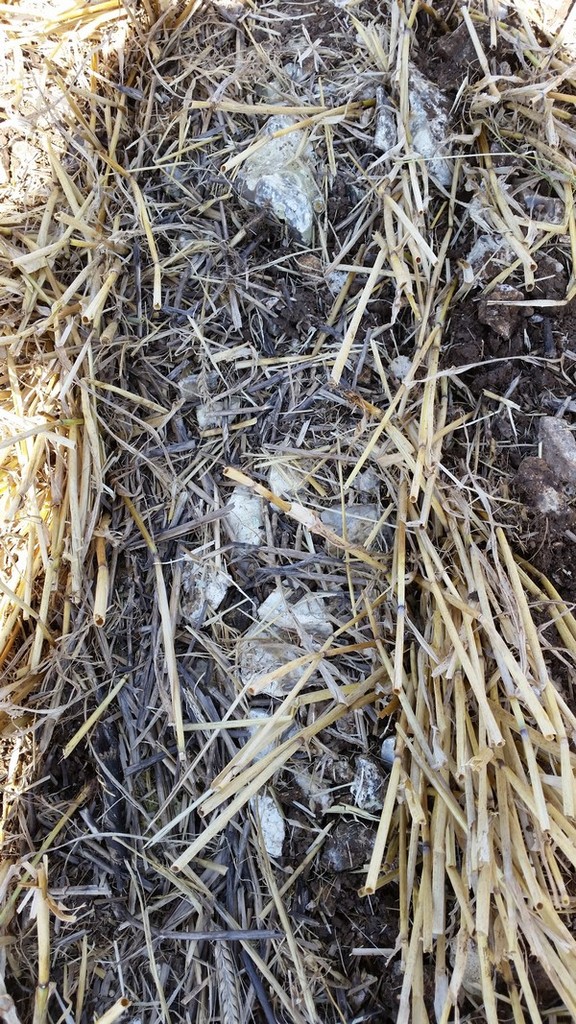Residue Micro Management
What is Micro-Management of residues?
There is little debate amongst soil conservationists that true Conservation Agriculture is as much about the management of crop residues as it is about ceasing to cultivate (till) the soil. But to date, residue management has mainly focused on the amount of residue that is left on a field as a whole after passage of a drill or planter. Few people make a distinction between the residues in or on the slot zone compared with residues on the whole field. Micro-management of residues focuses on managing residues specifically in or on the slot zone since this can have a greater influence on the success or failure of a no-tillage crop or the health of the soil in which it grows than ensuring that a target amount of residues remains on the field as a
|
Cross Slot® LDNT openers are the state-of-the-art in achieving this objective.
Residues returned over the slots act as a vegetative mulch, which have the following benefits:
(a) They greatly reduce evaporation of water from the disturbed slot zone. As soil dries, the colloidal films of liquid water that cling to soil particles get thinner and thinner and become increasingly difficult for seeds or living roots to extract from the soil. The strength with which these water films cling to soil particles is measured as a negative (suction) pressure. This varies from near zero at “Field Capacity” (FC) (when water is readily available to plants) to -15 bar at “Permanent Wilting Point” (PWP) which is when the soil is so dry that plants cannot access sufficient water to remain alive and they wilt and die. Even if plentiful water is then added by irrigation at PWP, the plants will not recover. The range between FC and PWP is known as the “Plant Available Range”.
If a soil becomes wetter than FC it is likely to become saturated and most plants (except those especially adapted to wet conditions, like rice) die because roots also need air to breathe and no air exists in the pore spaces between soil particles when they are saturated with water.
 (b) They trap water vapour as humidity in the pores between the soil particles in the plant available range. Seeds can access this humidity for germination even when there is insufficient liquid water available for seeds to take up (imbibe) for germination. If there is no vegetative mulch covering the sown slot, seeds will only germinate if there is a ready source of liquid water available. This is the same limitation that seeds have experienced for centuries when sown into fully tilled seedbeds.
(b) They trap water vapour as humidity in the pores between the soil particles in the plant available range. Seeds can access this humidity for germination even when there is insufficient liquid water available for seeds to take up (imbibe) for germination. If there is no vegetative mulch covering the sown slot, seeds will only germinate if there is a ready source of liquid water available. This is the same limitation that seeds have experienced for centuries when sown into fully tilled seedbeds.
But many no-tillage drill designers still do not recognise the opportunities that micro- managed crop residues offer for covering the sown slots. Instead, they design openers that re-create disturbed soil conditions in the slot zone with the aim of maximising soil- to-seed contact in the same way as has been done in fully tilled seedbeds for centuries. Then they wonder why seeds sown by Cross Slot® LDNT drills germinate in soil conditions in which their own drills fail regularly.
(c) They do exactly the same beneficial things for living cultures of soil microbes that are injected into the soil in the process of regenerating soil biological health.
Soil microbes like the same conditions that seeds like.
(d) They are an important source of recyclable carbon that is positioned over the slot at the same time as they minimise aeration (oxidation) of existing soil carbon that is otherwise disturbed within the slot and lost to the atmosphere as carbon dioxide.
(e) They position the main source of food that earthworms eat (dead and decaying residues) over the slot. This in turn, encourages earthworms to colonise the slot zone in search of food and their burrows biologically aerate the slot zone in damp soils at the same time as they incorporate carbon-rich residues into the soil.
Earthworms do not eat seeds. It is slugs, snails, and certain soil insects that do that.

 whole. Indeed, many designs of no-tillage openers sweep residues away from the slot zone or mix them into the soil to avoid machine blockages. While such openers may well meet field-scale residue-retention goals (of say 70% retention) they may not meet micro-management goals, which leaves a negative impression of no-tillage in general.
whole. Indeed, many designs of no-tillage openers sweep residues away from the slot zone or mix them into the soil to avoid machine blockages. While such openers may well meet field-scale residue-retention goals (of say 70% retention) they may not meet micro-management goals, which leaves a negative impression of no-tillage in general.